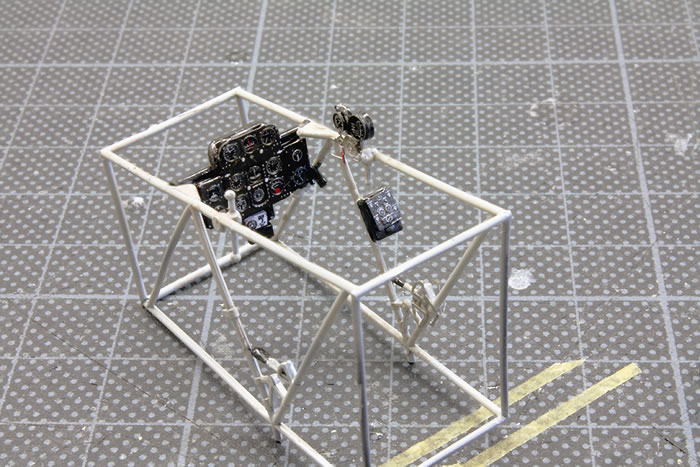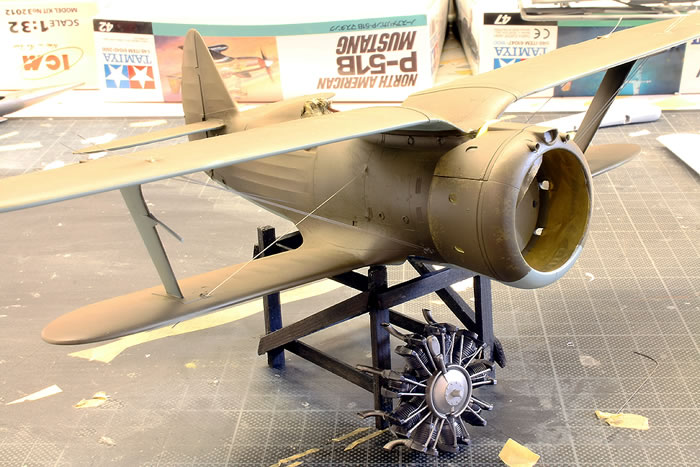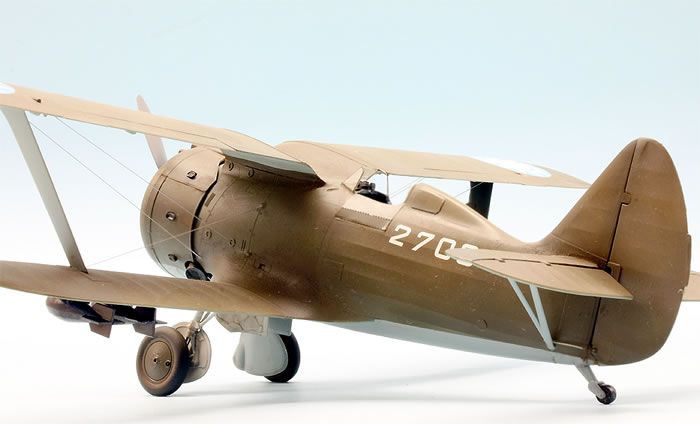ICM's 1/32 scale
Polikarpov I-153
Kuomintang
by Roland Sachsenhofer
|
Polikarpov I-153 „Kuomintang“ |

Hobby Boss' 1/32 Spitfire Mk.Vb Trop is available online from Squadron
The Polikarpov I-153 is an unusual biplane at first sight and a closer look reveals a few secrets that quickly confirm this first impression.
What catches the eye most quickly with this construction? It's probably the retractable landing gear that don't even want to correspond to the usual scheme of the braced double-decker. In fact, a masterstroke of the design office stands behind the implementation of the idea to improve the aerodynamics of the sleek fighter in this way.
The top speed of the I-153 increased by about 100 km/h compared to the very similar design of its predecessor, the I-15; a considerable value in relation to the 350 km/h top speed of the I-15!
Another conspicuous feature is the "seagull wing" in the upper middle part of the wing. This had positive effects on the strength as well as on the pilot's view. The name "Chaika", in German "Möwe", finds its explanation in it.
The I-153 stands with these characteristics at the end of a series of biplane fighters, which were developed at Polikarpov in the 30's. The biplane was now technically exhausted as a fighter plane, the design following the "Chaika" should become no less a legend: with the I-16 Polikarpov also started the age of the monoplane.
The I-153 flew in the so-called Winter War 1940 against the Finns. Some captured machines were also used by the Finns against their former owners. Another theatre of war in which the "Chaika" could prove its qualities was the Japanese-Soviet conflict in the Calchin-Gol area in 1939.
My model refers to a third place of use: I-153 were also represented in the ranks of the National Chinese, who tried to defend themselves against the Japanese invaders within the context of the long Japanese-Chinese wars starting in the mid-30s. From the end of 1941, these conflicts were to be transferred to the Second World War, which was sparked by Pearl Harbour in Far East Asia as well. According to information the shown I-153 flew in 1940 for the Kuomintang.

ICM has packed a wonderful kit into the box; the parts delight with their reasonable accuracy of fit, but above all with their fine and harmonious surface structures. Of course there is a lot to be repaired and sanded, but the putty can remain in the tube almost without exception.

The building instruction leads in at least fifty building steps descriptive by the appropriately complex building pleasure and leaves so far no questions open. There is only one decisive detail that needs to be researched: for the design of the bracing, one has to obtain clear models, as this is only a hint. Fortunately, this is not a problem, since in addition to the original photos, there are also some wonderful replicas of this interesting double-decker.

I paid special attention to a layered structure of the colors during the two-color varnishing. A few times I worked with liquid topcoat in order to get a nice and "lifelike" color effect. My conclusion: ICM delights even with this really recommendable kit the modeler's heart!

If you are interested in the building process, please have a look here on Scalemates: https://www.scalemates.com/profiles/mate.php?id=10148&p=albums&album=49925
As ever, remarks will be appreciated: ro.sachsenhofer@gmx.at
Model, Images and Text Copyright ©
2019 by Roland Sachsenhofer
Page Created 28 October, 2019
Last Updated
28 October, 2019
Back to HyperScale Main Page

|
Home
| What's New | Features | Gallery | Reviews | Reference | Resource Guides | Forum |